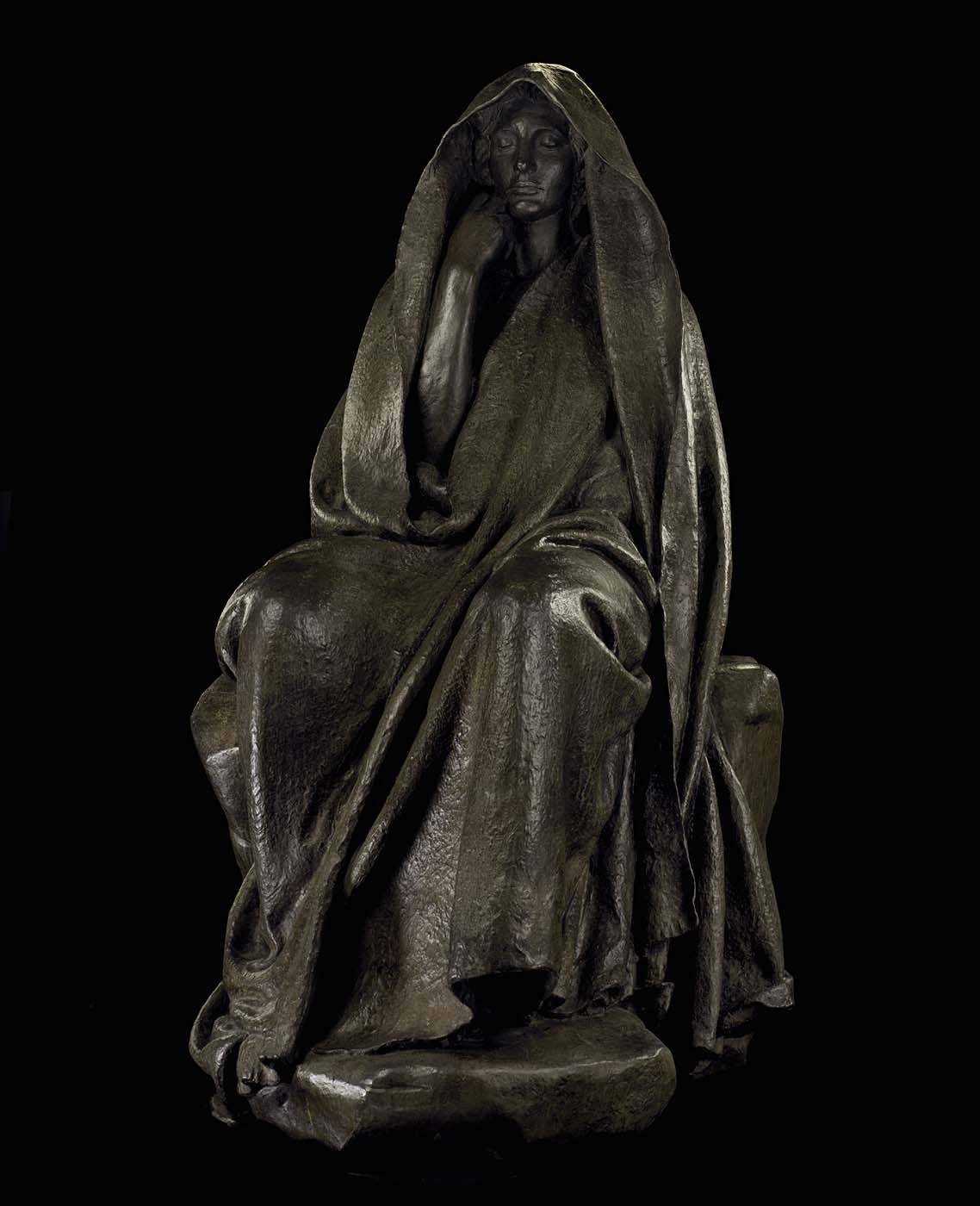Adams Memorial

"Clover" Adams, wife of the writer Henry Adams, committed suicide in 1885 by drinking chemicals used to develop photographs. Adams, who steadfastly refused to discuss his wife's death, commissioned Augustus Saint-Gaudens to create a memorial that would express the Buddhist idea of nirvana, a state of being beyond joy and sorrow. In Adams's circle of artists and writers, the old Christian certainties seemed inadequate after the violence of the Civil War, the industrialization of America, and Darwin's theories of evolution. Saint-Gaudens's ambiguous figure reflects the search for new insights into the mysteries of life and death. The shrouded being is neither male nor female, neither triumphant nor downcast. Its message is inscrutable. Clover's gravesite in Rock Creek Cemetery in Washington, D.C. quickly became a tourist attraction, but Adams resisted all attempts to sentimentalize the memorial as a symbol of grief. He acknowledged the power of Saint-Gaudens's sculpture, however, and allowed reproductions to be made and sold to a chosen few.
Exhibition Label, Smithsonian American Art Museum, 2006
1970.11.pdf
- 15
- Other objects by this creator in this institution
- 29
- Objects by this creator in other institutions